Scaffolding Rental Danielson
Find the best Rent Scaffolding in Danielson
Receive multiple Temporary Scaffolding quotes for your project today! Compare profiles, reviews, accreditations, portfolio, etc... and choose the best offer.
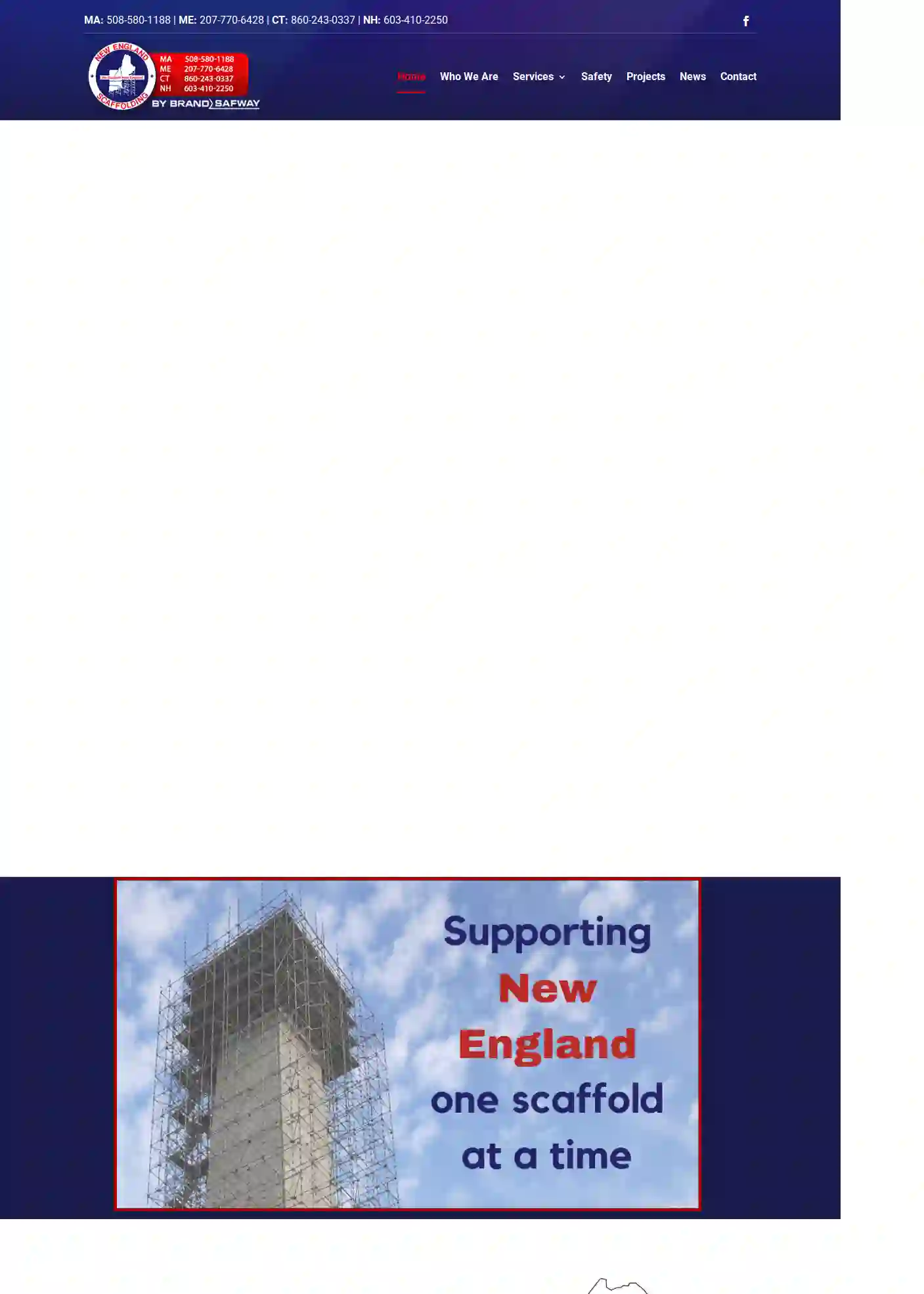
New England Scaffolding
2.54 reviewsNorwell, MA, 412 R Washington St, 02061, USNew England Scaffolding is a leading provider of scaffolding solutions, offering a range of services including scaffolding, shoring, suspended scaffolding, containment, temporary fencing, and debris chutes. With offices in Massachusetts, Maine, Connecticut, and New Hampshire, they prioritize safety and customer satisfaction. Their team of experienced professionals ensures that projects are completed efficiently and effectively, adhering to the highest safety standards. New England Scaffolding is dedicated to delivering top-quality services and building long-lasting relationships with clients.
- Services
- Why Us?
- Accreditations
- Our Team
- Testimonials
- Gallery
Get Quote
SafwayAtlantic by BrandSafway – New Jersey
4.423 reviews123 Main St, Newark, 07001, USSafway Atlantic by BrandSafway New Jersey is a leading provider of scaffolding solutions, offering a wide range of services including scaffolding rental, scaffolding installation, and scaffolding safety training. With a strong commitment to safety and customer satisfaction, the team at Safway Atlantic by BrandSafway New Jersey strives to provide top-notch service and support to clients across various industries.
- Services
- Why Us?
- Accreditations
- Our Team
- Testimonials
Get Quote
Nutmeg Scaffold & Ladder Co
4.97 reviewsWilton, CT, 743 Danbury Road, 06897, USNutmeg Scaffold is a leading provider of scaffolding rental and sales services in Connecticut, serving Fairfield County for over 50 years. With a wide range of commercial-quality products, they aim to provide the contractor community with top-of-the-line scaffolding solutions. Their staff can help calculate the required scaffolding for any project and deliver it to the job site, ensuring maximum efficiency and safety. Nutmeg Scaffold offers various services including scaffolding rental, pump jack sales and rental, and scaffolding in use. They prioritize safety and environmental consciousness, recommending the use of scaffolding stair towers for upper-level entry and promoting eco-friendly practices.
- Services
- Why Us?
- Accreditations
- Our Team
- Testimonials
- Gallery
Get Quote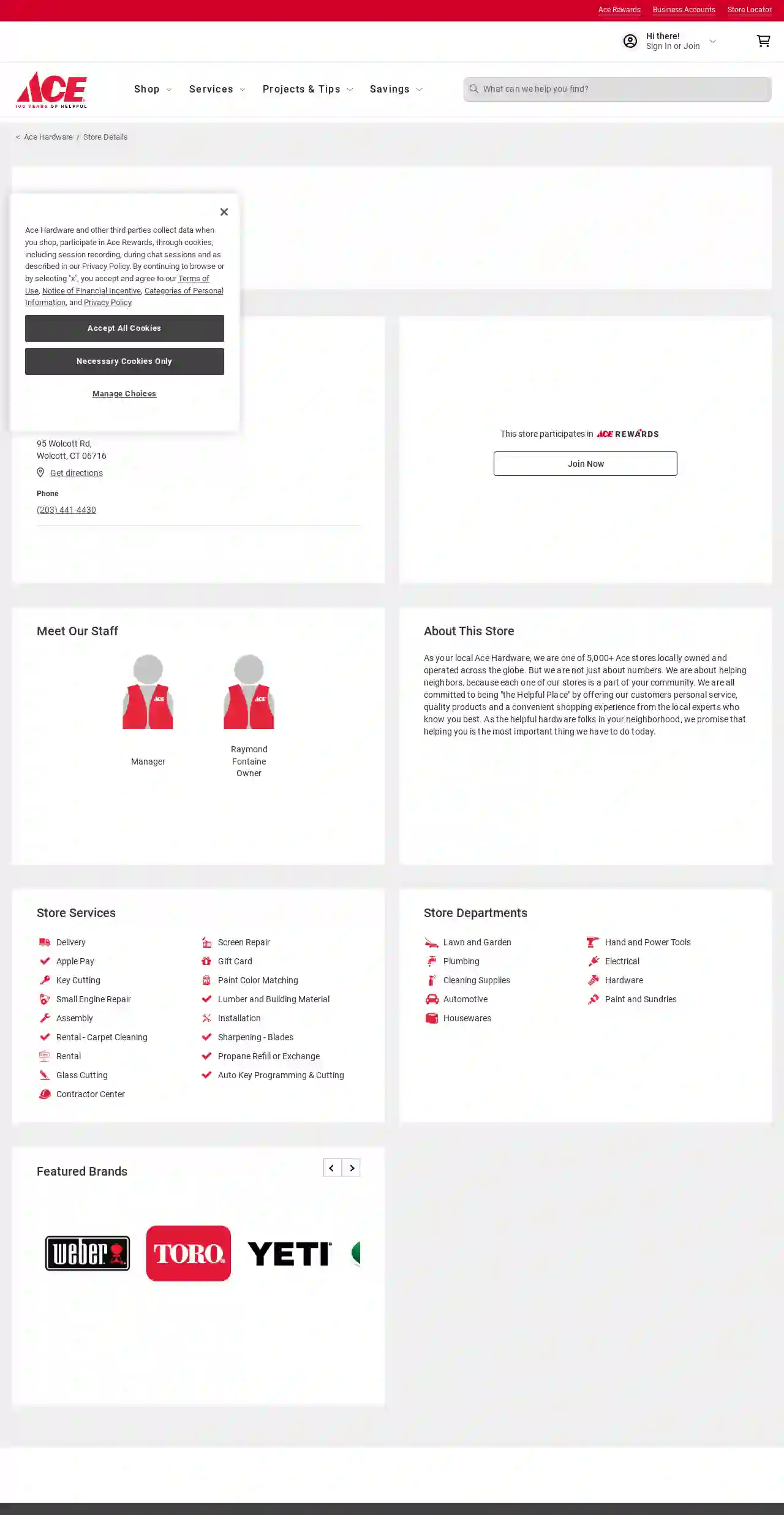
Ace Hardware of Wolcott
4.567 reviews95 Wolcott Rd, Wolcott, 06716, USAs your local Ace Hardware, we are one of 5,000+ Ace stores locally owned and operated across the globe. But we are not just about numbers. We are about helping neighbors, because each one of our stores is a part of your community. We are all committed to being "the Helpful Place" by offering our customers personal service, quality products and a convenient shopping experience from the local experts who know you best. As the helpful hardware folks in your neighborhood, we promise that helping you is the most important thing we have to do today.
- Services
- Why Us?
- Accreditations
- Our Team
- Gallery
Get Quote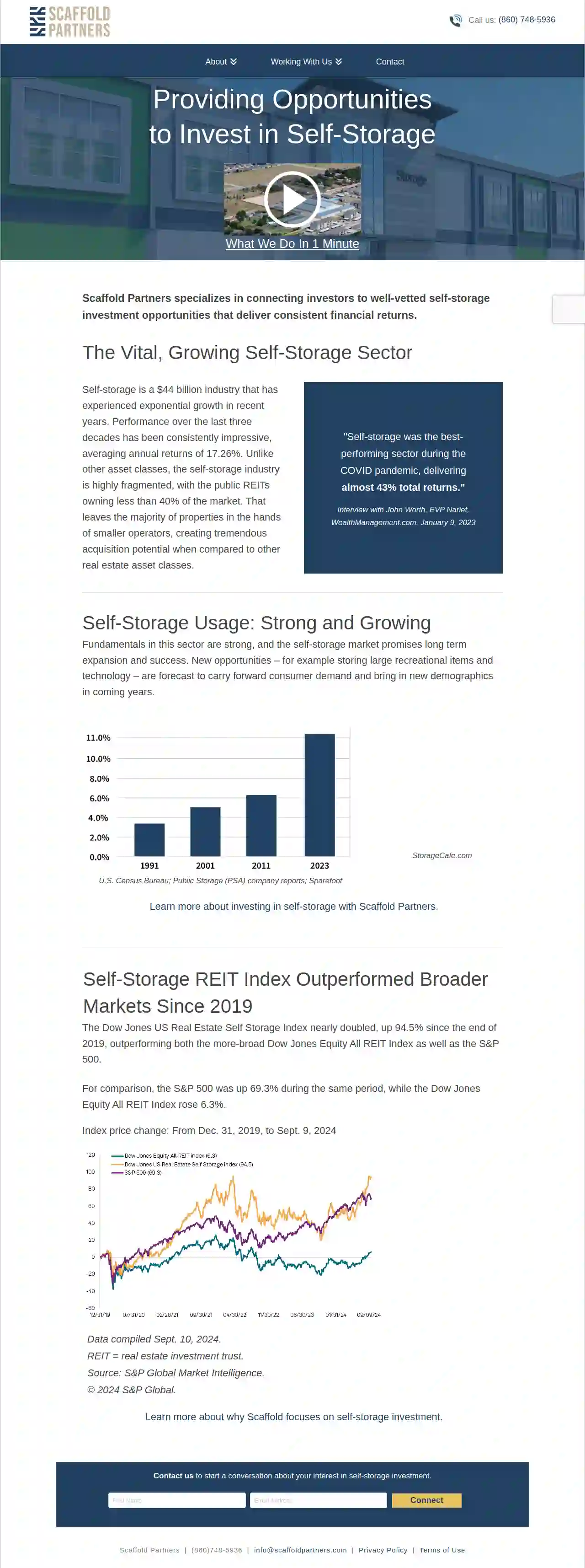
Scaffold Partners
Waterbury, USScaffold Partners specializes in connecting investors to well-vetted self-storage investment opportunities that deliver consistent financial returns. The self-storage industry is a $44 billion industry that has experienced exponential growth in recent years, averaging annual returns of 17.26%. Unlike other asset classes, the self-storage industry is highly fragmented, with the public REITs owning less than 40% of the market. This leaves the majority of properties in the hands of smaller operators, creating tremendous acquisition potential when compared to other real estate asset classes. Fundamentals in this sector are strong, and the self-storage market promises long term expansion and success. New opportunities – for example storing large recreational items and technology – are forecast to carry forward consumer demand and bring in new demographics in coming years.
- Services
- Why Us?
- Accreditations
- Gallery
Get Quote
R&R Scaffolding, Ltd.
4.69 reviews333 SE 2nd Ave, Miami, 33131, USR&R Companies have been pioneers and innovators in the suspended scaffold industry for nearly four decades. We deliver services and products ranging from the simplest solutions to the most complex systems. Our primary markets include commercial, industrial, institutional, and residential sectors. Our diverse portfolio of brands and extensive capabilities have transformed us into the multifaceted company we are today.
- Services
- Why Us?
- Accreditations
- Gallery
Get Quote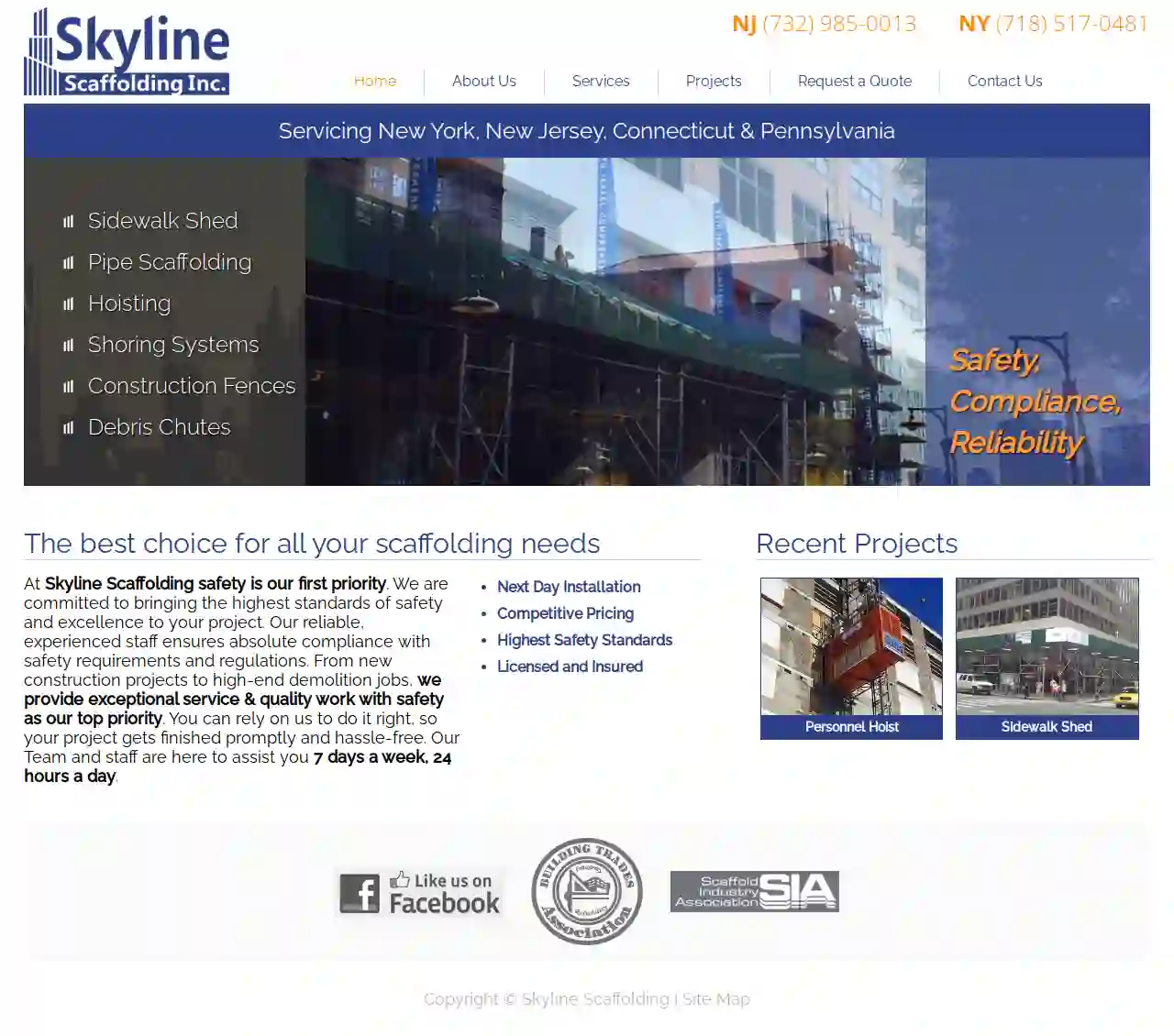
Skyline Scaffolding Group, Inc.
4.49 reviews740 Ramsey Avenue, Hillside, 07205, USAt Skyline Scaffolding, safety is our top priority. We are committed to bringing the highest standards of safety and excellence to your project. Our reliable, experienced staff ensures absolute compliance with safety requirements and regulations. From new construction projects to high-end demolition jobs, we provide exceptional service & quality work with safety as our top priority. We have over 25 years of experience in the field of scaffolding and bring that experience to your project. We are passionate about what we do and look for ways to provide the best possible service to our clients. For our customer’s convenience, we provide all of our services to New York, New Jersey, Pennsylvania, and Connecticut.
- Services
- Why Us?
- Accreditations
- Our Team
- Gallery
Get Quote
Warning Lights Inc
4.84 reviewsHamden, USAt Equipment Rental CT, we offer a wide range of equipment rentals for various industries, including landscaping, construction, and masonry. Our extensive inventory includes air compressors, boom lifts, concrete mixers, and more. With our equipment, you can expedite your project and get the job done efficiently. We deliver our equipment to your site, so you can focus on your project. Contact us today to learn more about our equipment rentals and how we can help you.
- Services
- Why Us?
- Gallery
Get Quote
Scaffolding Towers of America
414 reviews330 Roycefield Rd., Building J, Hillsborough, 08844, USScaffolding Towers of America, Inc. is New Jersey's leading provider of scaffolding and access equipment. With over 50 years of experience, we offer a wide range of products and services to meet the needs of our clients, from small contractors to large corporations. Our commitment to quality, safety, and customer service has made us the trusted partner for scaffolding solutions throughout the Tri-State area. We carry a comprehensive inventory of Bil-Jax frame scaffolding and components, as well as system scaffolding from Layher and A-1 Scaffolding. Our IN-STOCK selection of scaffolding equipment is the largest in New Jersey, and our range of OSHA compliant products includes scaffold frames, rolling towers, stair towers, plank, aluminum platforms, baker scaffolding, leveling jacks, casters, braces, climbing ladders, hoist arms, guard rails, swivel clamps, straight clamps, and well wheels. We offer both new and used scaffold for sale. If you know your piece count, we can quickly provide a quote for you. If you aren't sure, simply call us with the required dimensions and we can get you an estimate. Most scaffold orders are available for pick up the same day. We can also deliver your scaffold order for an additional charge. Advance notice is required for scaffold delivery. Scaffold installation is also available. In addition to our scaffolding products, we also carry a variety of Werner products designed to provide access. These include various heights of stepladders, extension ladders, platform ladders, podium ladders, aluminum and steel pump jacks, and 20" wide 2-man stages (picks). All products are IN STOCK and available for pick up today. Delivery is also available. Our team of experienced professionals is dedicated to providing our clients with the highest quality scaffolding solutions. We are committed to safety, reliability, and customer satisfaction. Contact us today to learn more about our products and services.
- Services
- Why Us?
- Gallery
Get Quote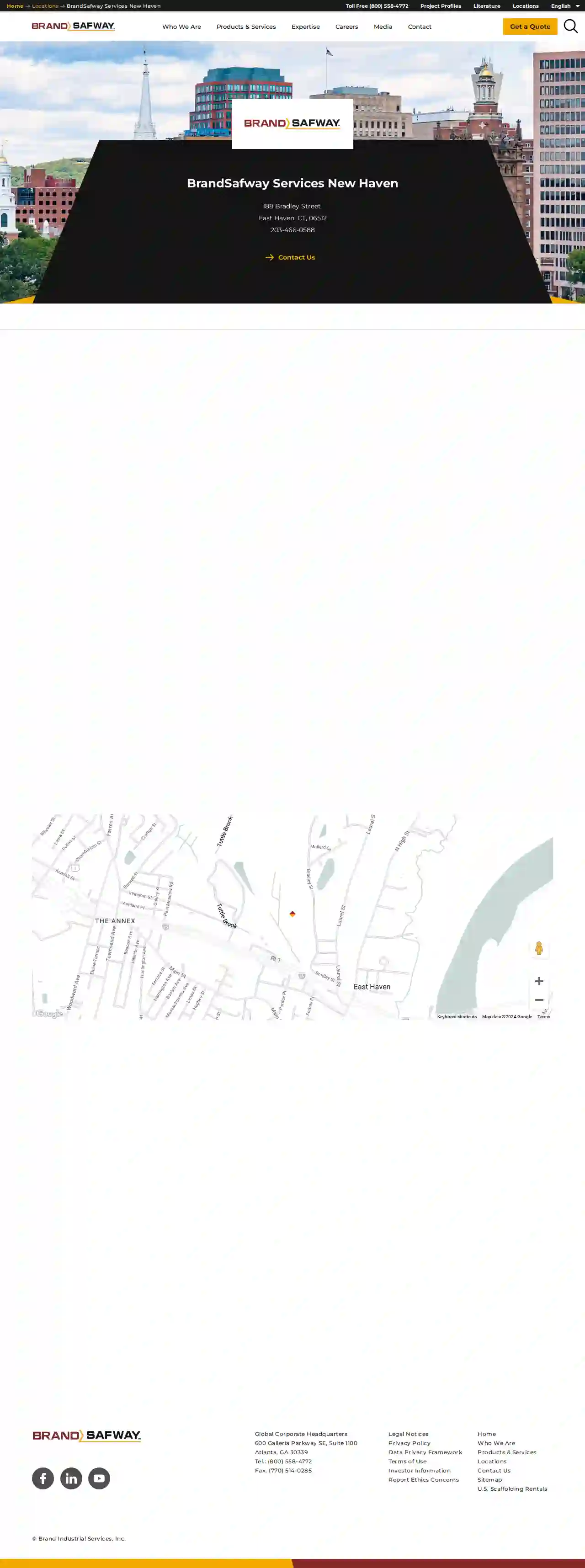
BrandSafway Services New Haven
4.73 reviews123 BrandSafway Blvd, New Haven, 12345, USBrandSafway is a leading provider of access solutions, including scaffolding, aerial work platforms, and forming and shoring. With a strong commitment to safety, quality, and customer satisfaction, BrandSafway offers a wide range of services tailored to meet the unique needs of clients across various industries. Their team of experienced professionals works closely with clients to understand their requirements and deliver customized solutions that enhance efficiency and productivity. BrandSafway is dedicated to providing innovative solutions that meet the highest standards of safety and quality, ensuring successful project outcomes and long-term partnerships.
- Services
- Why Us?
- Accreditations
- Our Team
- Testimonials
Get Quote
Over 2,353+ Scaffolding Contractors on our directory
Our scaffolding contractors operate in Danielson & beyond!
ScaffoldingHQ has curated and vetted the Best Scaffolding Businesses arround Danielson. Find a reliable contractor today.
Frequently Asked Questions About Scaffolding Rental
- Underestimating Scaffolding Needs: Accurately assess the required scaffolding size and type.
- Not Comparing Quotes: Get quotes from multiple rental companies to find the best deal.
- Ignoring Safety: Prioritize safety by hiring qualified erectors and ensuring workers follow safety protocols.
- Overlooking Permits: Obtain any necessary permits before erecting scaffolding.
- Not Inspecting the Scaffolding: Carefully inspect the scaffolding upon delivery and before each use.
- Modifying Scaffolding without Authorization: Never alter the scaffolding without consulting the rental company or an engineer.
- Small Repairs or Painting: A rolling tower or mobile scaffolding is often sufficient for smaller projects, providing a stable platform at lower heights.
- Roof Work: Roofing projects typically require taller and more robust scaffolding, like tube and clamp or system scaffolding.
- Two-Story Homes: For accessing higher levels of a two-story home, you may need a larger system scaffolding structure.
- Limited Access: If space is restricted, consider a narrow-width scaffolding tower or suspended scaffolding.
- Cost-Effective for Short-Term Projects: Renting is generally more affordable for projects that don't require scaffolding for an extended period.
- No Storage or Maintenance Costs: You don't have to worry about storing or maintaining the scaffolding after your project.
- Access to a Variety of Equipment: Rental companies offer a wide selection of scaffolding types and sizes, allowing you to choose the best fit for your project.
- Long-Term Investment: Buying makes sense if you anticipate frequent scaffolding needs over a long period.
- Customization: You can customize the scaffolding to fit your specific requirements.
- Potential Resale Value: You can potentially resell the scaffolding after you no longer need it.
- Residential: Roofing repairs and replacements, siding installations, painting projects, window replacements, gutter cleaning and repairs, chimney repairs, solar panel installations.
- Commercial: Building construction and renovations, facade repairs and cleaning, window cleaning, painting, sign installation, and maintenance of high-rise structures.
- Industrial: Plant maintenance, access to elevated equipment, tank inspections and repairs, bridge repairs, and other industrial construction projects.
- Events: Temporary stages, grandstands, lighting and sound rigging, and platforms for concerts, festivals, and sporting events.
What are some common mistakes to avoid when renting scaffolding?
What type of scaffolding is best for home use?
What is the difference between renting and buying scaffolding?
Renting Scaffolding:
What are some common uses for scaffolding rentals?
What are some common mistakes to avoid when renting scaffolding?
- Underestimating Scaffolding Needs: Accurately assess the required scaffolding size and type.
- Not Comparing Quotes: Get quotes from multiple rental companies to find the best deal.
- Ignoring Safety: Prioritize safety by hiring qualified erectors and ensuring workers follow safety protocols.
- Overlooking Permits: Obtain any necessary permits before erecting scaffolding.
- Not Inspecting the Scaffolding: Carefully inspect the scaffolding upon delivery and before each use.
- Modifying Scaffolding without Authorization: Never alter the scaffolding without consulting the rental company or an engineer.
What type of scaffolding is best for home use?
- Small Repairs or Painting: A rolling tower or mobile scaffolding is often sufficient for smaller projects, providing a stable platform at lower heights.
- Roof Work: Roofing projects typically require taller and more robust scaffolding, like tube and clamp or system scaffolding.
- Two-Story Homes: For accessing higher levels of a two-story home, you may need a larger system scaffolding structure.
- Limited Access: If space is restricted, consider a narrow-width scaffolding tower or suspended scaffolding.
What is the difference between renting and buying scaffolding?
Renting Scaffolding:
- Cost-Effective for Short-Term Projects: Renting is generally more affordable for projects that don't require scaffolding for an extended period.
- No Storage or Maintenance Costs: You don't have to worry about storing or maintaining the scaffolding after your project.
- Access to a Variety of Equipment: Rental companies offer a wide selection of scaffolding types and sizes, allowing you to choose the best fit for your project.
- Long-Term Investment: Buying makes sense if you anticipate frequent scaffolding needs over a long period.
- Customization: You can customize the scaffolding to fit your specific requirements.
- Potential Resale Value: You can potentially resell the scaffolding after you no longer need it.
What are some common uses for scaffolding rentals?
- Residential: Roofing repairs and replacements, siding installations, painting projects, window replacements, gutter cleaning and repairs, chimney repairs, solar panel installations.
- Commercial: Building construction and renovations, facade repairs and cleaning, window cleaning, painting, sign installation, and maintenance of high-rise structures.
- Industrial: Plant maintenance, access to elevated equipment, tank inspections and repairs, bridge repairs, and other industrial construction projects.
- Events: Temporary stages, grandstands, lighting and sound rigging, and platforms for concerts, festivals, and sporting events.